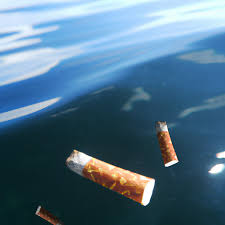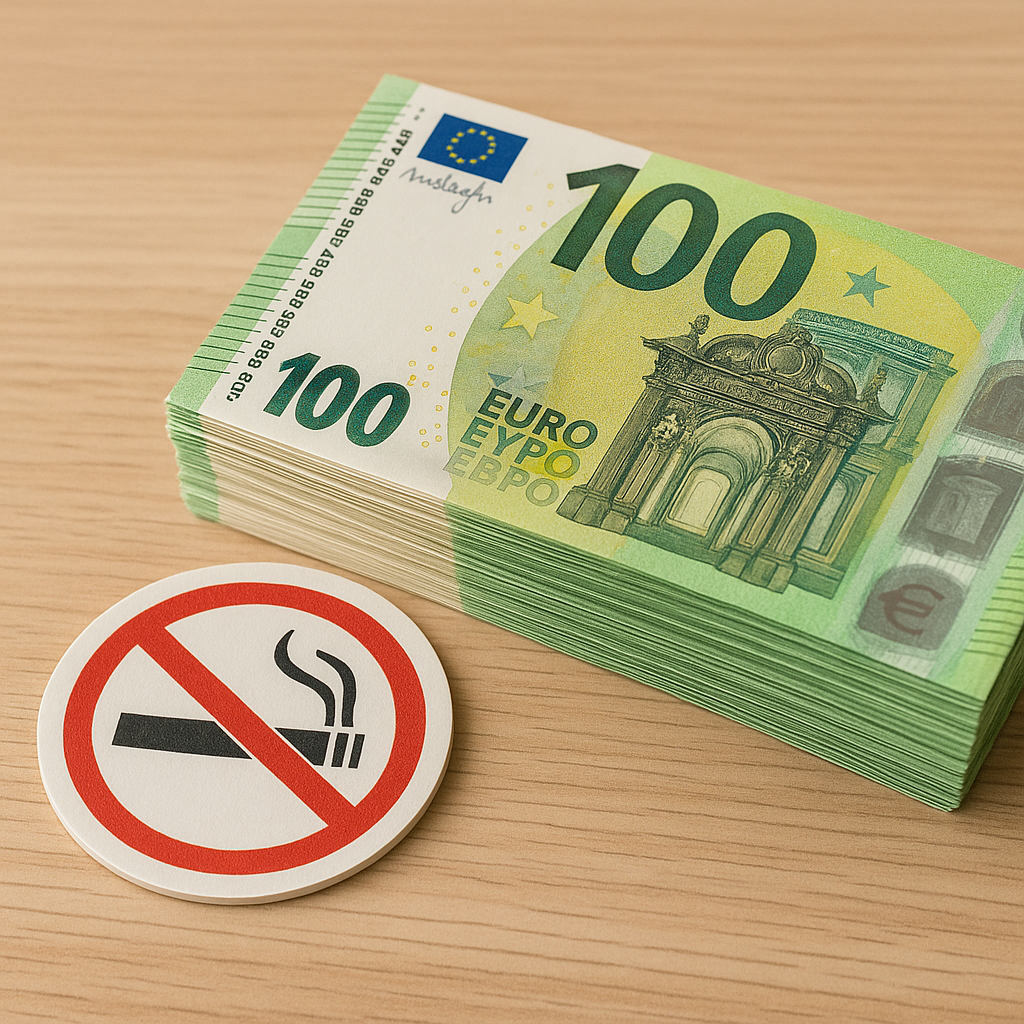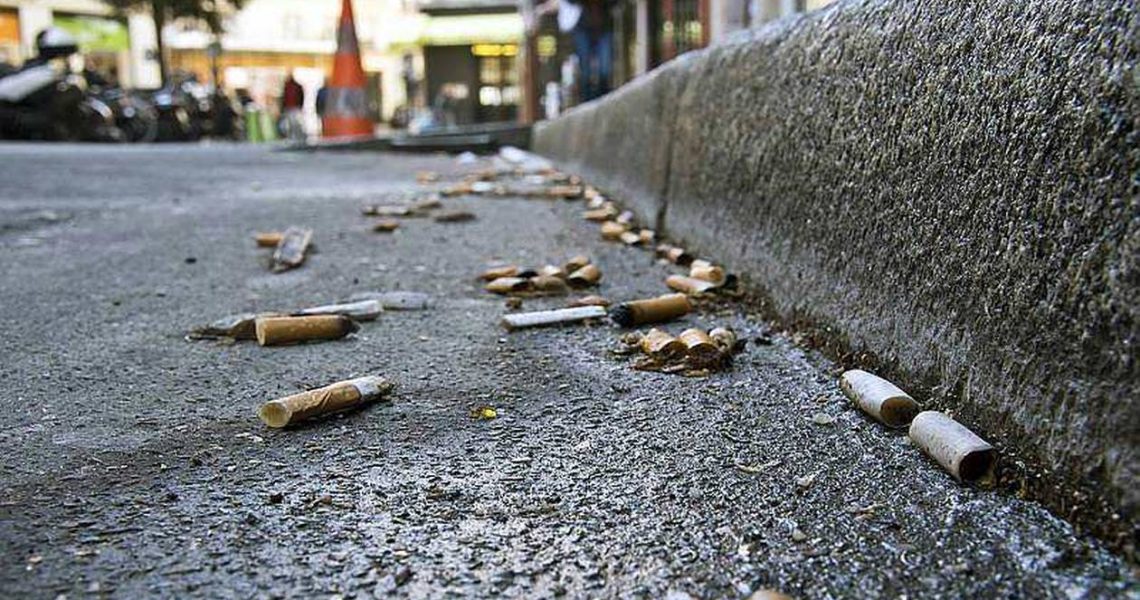Cigarette butts, though small and unobtrusive, represent a major threat to theenvironment. With over 4.5 trillion cigarette butts discarded worldwide every year, they rank among the most widespread types of waste. Made from non-biodegradable plastic, they take several years to decompose, releasing toxic substances into soil, water and ecosystems. They often make the headlines, as their numbers are constantly on the increase, and the development of pollution awareness associations speaks volumes.
In many countries, cigarette butts are often left in nature, accumulating in urban spaces, beaches and oceans. This behavior contributes to invisible but devastating pollution. In France, the newsregularly highlights the efforts of local authorities to deal with this scourge, but the solutions are still limited by the scale of the problem. Cigarette butts are not waste like any other…
In this article, we explore the reasons for the ubiquitous presence of cigarette butts, their effects on the environment, and possible solutions to recycle them or limit their production, notably through initiatives such as recycling, collection or smoking cessation.

Why are cigarette butts so widespread?
A product for mass consumption
Cigarettes are among the world’s most widely consumed consumer products. With an annual production of over 6,000 billion cigarettes, this industry generates an astronomical amount of waste in the form of cigarette butts. These small residues of daily consumption are becoming a global problem, with some 4.5 trillion cigarette butts ending up in the environment every year.
In France, around 30% of cigarette butts end up abandoned on the streets or in nature. Collection campaigns often reveal that cigarette butts are the most common type of litter in urban and coastal areas. For example, during a beach clean-up event in Marseille, volunteers collected over 50,000 cigarette butts in one day, testifying to the scale of the problem. This behavior is exacerbated by the absence of enforcement measures or ashtrays in public spaces. The chemical substances contained in the butt filter are particularly problematic.
Cigarette consumption is deeply rooted in society, not least through the tobacco industry’s historical advertising and the glamorous image it has conveyed. Although efforts to reduce consumption have borne fruit in some countries, smoking remains high in regions such as Asia and Africa, where awareness campaigns are less frequent. This massive global demand is fuelling an environmental crisis which, without global solutions, will continue to worsen.
Extremely slow degradation
Cigarette filters, often considered biodegradable by consumers, are in fact made from cellulose acetate, a non-biodegradable type of synthetic plastic. This material, used to improve filtration of toxic substances, takes between 10 and 15 years to decompose in nature. During this process, the filters release thousands of plastic microfibers into the soil and aquatic ecosystems, exacerbating pollution.
Butts aren’t just solid waste. They act like sponges, accumulating toxins fromtobacco combustion such as nicotine, ammonia and arsenic. These substances are slowly released into the environment, contaminating soil and water. A single cigarette can pollute up to 500 liters of water, with devastating effects on aquatic ecosystems. In coastal areas, for example, tests show that the presence of cigarette butts reduces the biological diversity of marine organisms.
What’s more, their small size and mobility make them easy to disperse. Carried by wind or rain, they end up in rivers and oceans, contributing to the global plastic pollution crisis. According to data from the Ocean Conservancy, cigarette butts account for around 30% of the waste collected during beach clean-up campaigns. Their ubiquity, combined with their slow degradation, makes them one of the most visible symbols of the environmental crisis.
The environmental impact of cigarette butts
Soil and water pollution
Cigarette butts have a particularly harmful impact on soil and water, due to the toxins they gradually release. Once discarded, they infiltrate soils, altering their fertility and affecting plant growth. These toxic substances, such as nicotine, lead and arsenic, disrupt terrestrial ecosystems, in particular the micro-organisms essential for organic decomposition.
Cigarette butts in water cause large-scale chemical contamination. Studies show that a single cigarette butt can pollute up to 500 liters of water, directly affecting aquatic organisms. In the oceans, filters release plastic microfibers that become part of the food chain, threatening fish and, indirectly, humans. This phenomenon is amplified by the transport of cigarette butts via sewers and rivers, contributing to global plastic pollution.

A high cost for local authorities
The management of cigarette butts represents a significant expense for local authorities. In France, municipalities spend around 30 million euros each year to clean up this waste, a cost that includes collection, treatment and awareness-raising campaigns. This amount is particularly high in large cities such as Paris, where over 350 tonnes of cigarette butts are collected annually.
Beyond the direct costs, the lack of adequate measures to limit cigarette butts makes the situation worse. Butts often clog drainage systems, leading to flooding in urban areas and increasing maintenance costs for public infrastructure. Initiatives such as installing public ashtrays or fining negligent smokers have shown limited effectiveness, calling for more ambitious solutions, such as funding from the tobacco industry.
Solutions to reduce cigarette butt pollution
The role of awareness campaigns
Awareness campaigns play a crucial role in the fight against pollution caused by cigarette butts. These initiatives aim to inform smokers about the environmental impact of their actions and encourage them to adopt more responsible behavior. For example, cities such as Nice and Marseille have launched local campaigns to distribute portable ashtrays to smokers, significantly reducing the number of cigarette butts thrown on the ground.
These campaigns are not limited to the distribution of materials. They often include posters in public places, educational videos posted on social networks and collaborations with schools to raise awareness among the younger generation. Collective clean-up days, such as World Cleanup Day, also mobilize thousands of volunteers every year, creating a collective awareness of the environmental urgency associated with cigarette butts.
You may also be interested in this article: If you’re looking to launch a booming new business, we offer training courses in laser anti-tobacco.
Tobacco industry accountability
Thetobacco industry must take some responsibility for managing the waste it generates. In some countries, regulations require cigarette manufacturers to make a financial contribution to the clean-up of cigarette butts. In Germany, a specific tax of 40 million euros a year is collected from tobacco producers to finance cleaning and recycling campaigns.
Another solution could be the introduction of biodegradable filters, which would considerably reduce the environmental impact of cigarette butts. However, this transition remains slow due to the costs associated with developing alternative materials. On the other hand, greater transparency on cigarette components and clear labelling on the environmental effects of cigarette butts could encourage consumers to adopt more responsible behaviours, while reinforcing the industry’s social responsibility.
Smoking cessation as a sustainable solution
Smoking cessation is the most effective way of reducing cigarette-butt pollution at source. Every person who stops smoking contributes directly to reducing the number of cigarette butts left in the environment, while improving their own health.
Innovative methods, such as laser auriculotherapy, help smokers overcome their nicotine dependency naturally and without side effects. In addition, nicotine substitutes such as patches or gums remain common options, although medical advice is often recommended to ensure their effectiveness.
Collective smoking cessation would also have considerable environmental benefits. According to the WHO, a 10% global reduction in cigarette consumption could reduce plastic pollution linked to cigarette butts by several million tonnes each year, thus contributing to sustainable development.
Conclusion
Cigarette butts, though small, represent a major environmental crisis. Their massive production, slow degradation and toxicity make them one of the most widespread and destructive types of waste in the world. However, solutions do exist: raising smoker awareness, efficient waste collection and better regulation of thetobacco industry can help limit their impact.
At the same time smoking cessation remains the most effective solution for reducing cigarette-butt pollution at source. By giving up smoking, you’re not only helping your own health, but also protecting the environment.
Protecting the planet starts with simple, collective gestures. Together, we can build a cleaner, more sustainable future.
If you want to stop smoking, visit one of our anti-smoking laser centers near you.
